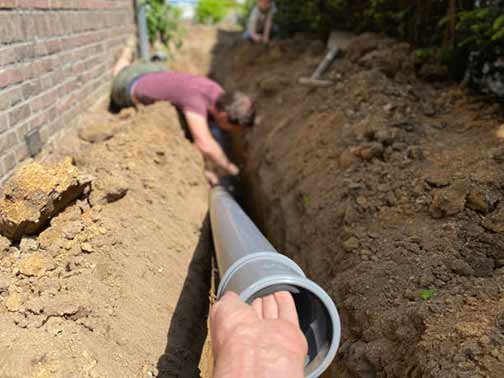
A broken sewer line is one of the most difficult plumbing issues to deal with in your home, says Five Star Management. Because sewer line problems can cause massive property damage in a very short time and also upset your day-to-day routine, you want to fix them as soon as they happen.
Usually, fixing these problems means repairing or replacing the section of the broken sewer line. This is done using a range of sewer line repair or replacement strategies. These are either traditional methods that involve some digging or modern methods that do not.
But there are also times when you cannot fix a sewer line problem by simply replacing or repairing the damaged section of the line. Instead, you may have to replace the entire sewer line to resolve the drain issues in your home.
How do you know when to do a full sewer line replacement in your home versus a partial sewer line replacement? This is a hard question for most homeowners because of the high cost, inconvenience and disruptions associated with this project.
Yet it is a question you will ultimately have to answer someday.
That is because sewer lines don’t last forever. Your sewer line will eventually come to the end of its service life and you don’t want to get caught up trying to fix a sewer line when you should replace it. That will only cause more problems and inflate the final cost of the project.
To help you answer the question, this post outlines the signs to look for in your home when deciding between a partial sewer line repair/replacement and a full sewer line replacement. The information in this short guide will save you a ton of time, money and trouble.
6 signs it is time to do a full sewer line replacement
Extensive tree root damage
Invasive tree roots can intrude into the sewer system and weaken it to a point where it makes more sense to replace the entire line instead of fixing it. In a terrible tree root intrusion, the sewer line may even collapse. If you have had problems with tree roots penetrating multiple sections of your sewer line, the best option to fix the problem might be to replace the sewer line completely.
The age of the sewer line
If your sewer line has reached or is approaching the end of its service life, it does not make sense to spend more money fixing problems in the line. A sewer line can last between 50 and 100 years, depending on the pipe material, the amount of care it gets and the nature of the surrounding soil. A sewer line becomes more fragile and susceptible to damage as it nears retirement; it makes sense to replace it.
The material of the sewer line
Some sewer line materials are more resilient than others. Materials like clay, cast iron, or Orangeburg are prone to corrosion, collapse and infiltration by tree roots. As such, they tend not to last as long as their manufacturer’s projected lifespan. If your sewer line is made of one of these vulnerable materials, it will continue to cause problems and take money out of your pocket unnecessarily. The entire sewer line should be replaced.
Soil movements and house settling
Soil shifts can alter the placement of a sewer line and damage it beyond repair. These soil movements often happen due to sinkholes, earthquakes, erosion, excessive rainfall or even leaks in the main water line. If the soil around a sewer line is shifting, it can exert enough force on the line to damage it severely. If this has happened to your home, replace the sewer line after stabilizing the soil.
Recurring sewer line problems
If your sewer line is chronically problematic, it could signify that the pipes have become fragile and need a replacement. Frequent use of chemical drain cleaners and corrosion due to natural causes are two major reasons for this kind of sewer line issue. If the sewer line has a history of frequent leaks without apparent causes, it may be time to replace the line.
Foundation issues and structural problems
If the problems in the sewer line are causing structural problems in the home, the sewer line should be replaced. A broken sewer line can leak water into the base of a building. This can cause cracks in the foundation or cause the house to start to sink in serious cases To fix these issues, the structural issues and the underlying sewer line problems must be addressed. The best solution for the sewer line problems is to replace the line.
If your home is showing any of the above signs, a professional plumber should be able to camera inspect the sewer line to see if your suspicions are unfounded or if they are true.
If your sewer line is found to be damaged enough to justify full replacement, a reputable plumber can guide you on the next steps to take.


